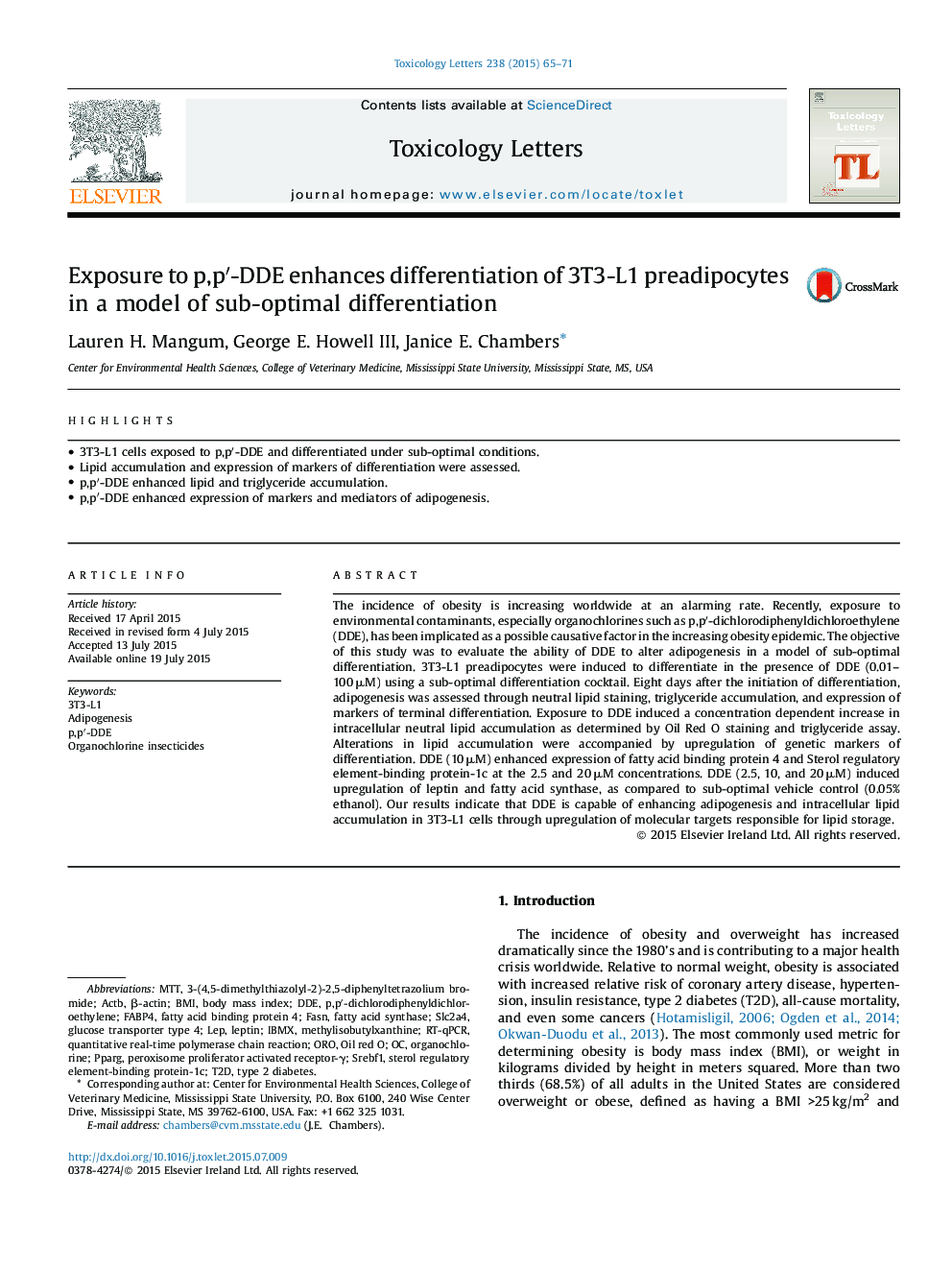| Article ID | Journal | Published Year | Pages | File Type |
|---|---|---|---|---|
| 5859891 | Toxicology Letters | 2015 | 7 Pages |
Abstract
The incidence of obesity is increasing worldwide at an alarming rate. Recently, exposure to environmental contaminants, especially organochlorines such as p,pâ²-dichlorodiphenyldichloroethylene (DDE), has been implicated as a possible causative factor in the increasing obesity epidemic. The objective of this study was to evaluate the ability of DDE to alter adipogenesis in a model of sub-optimal differentiation. 3T3-L1 preadipocytes were induced to differentiate in the presence of DDE (0.01-100 μM) using a sub-optimal differentiation cocktail. Eight days after the initiation of differentiation, adipogenesis was assessed through neutral lipid staining, triglyceride accumulation, and expression of markers of terminal differentiation. Exposure to DDE induced a concentration dependent increase in intracellular neutral lipid accumulation as determined by Oil Red O staining and triglyceride assay. Alterations in lipid accumulation were accompanied by upregulation of genetic markers of differentiation. DDE (10 μM) enhanced expression of fatty acid binding protein 4 and Sterol regulatory element-binding protein-1c at the 2.5 and 20 μM concentrations. DDE (2.5, 10, and 20 μM) induced upregulation of leptin and fatty acid synthase, as compared to sub-optimal vehicle control (0.05% ethanol). Our results indicate that DDE is capable of enhancing adipogenesis and intracellular lipid accumulation in 3T3-L1 cells through upregulation of molecular targets responsible for lipid storage.
Keywords
DDE3-(4,5-dimethylthiazolyl-2)-2,5-diphenyltetrazolium bromideSREBF1p,p′-dichlorodiphenyldichloroethyleneSlc2a4PPARG3T3-L1OROLEPT2DFABP4IBMXRT-qPCRMTTp,p′-DDEβ-actinAdipogenesisOrganochlorinefatty acid synthaseOrganochlorine insecticidesType 2 diabetesOil red Obody mass indexBMIActbFasnLeptinGlucose transporter type 4quantitative real-time polymerase chain reactionfatty acid binding protein 4sterol regulatory element-binding protein-1cperoxisome proliferator activated receptor-γ
Related Topics
Life Sciences
Environmental Science
Health, Toxicology and Mutagenesis
Authors
Lauren H. Mangum, George E. III, Janice E. Chambers,
